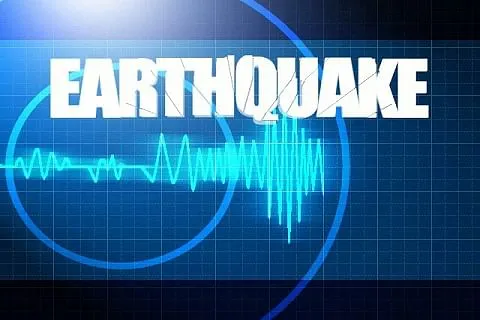“Science tells us where an earthquake can strike, and withwhat magnitude, but ‘when’ it will strike is a bad question to ask”. It isanalogous to a statement that “We are living on a time bomb and time isunknown”.
Kashmir lies in one of the most seismically vulnerable areasof Zone IV & Zone V. Based on historical records, the region hadexperienced quite a few devastating earthquakes in the past. A massiveearthquake struck the Jammu & Kashmir on the morning of 8 October 2005having a magnitude of 7.6 and tremors were felt strongly in Pakistan, India andAfghanistan. This earthquake resulted in more than 80,000 deaths across Indianand Pakistan administrated Kashmir.
In the past innumerous smaller intensity earthquakes havestruck the Himalayas and studies have suggested that a large strain havebuildup. It has been estimated that magnitude 7.6 Muzaffarabad earthquake that struck in 2005 at the far western end of the Kashmirhave released only 10 per cent of the accumulated stress
An International conference on “Climate Change and Extremeevents in Himalayan Region” was recently held at the Indian Institute ofTechnology (IIT) Mandi attended by top earth scientists and seismologists. Theconference concluded with a consensus among all scientists and scholars who arestudying The Himalayas that a great earthquake is imminent anytime in future.Apart from that, the imagery maps of ISRO’s satellite, alongwith Google Earthsuggests grim prediction for North Indian regions. The research suggests,”An earthquake of magnitude 8.5 or more is overdue in Himalayas and some partsof Northern India “. It also indicates towards poor preparation byauthorities to deal with some natural calamity which is only likely to increasethe level of destruction.
When an earthquake does hit an area and it causesunmentionable destruction and loss of life, there is nothing but repentanceover the unpreparedness. Despite the enough warnings by many Scientists andagencies including international ones, the administration is not taking stepsto understate the damage. The onus lies with both at individual andadministrative level to reduce damage tominimum level if steps are taken on a time.
At individual level at the time of planning of building astructure, seismic consideration should be given a proper importance as thisregion is highly vulnerable to earthquakes. Before finalizing a building planproper discussion should be held withengineers and experts for making astructure seismic resistant that can protect our lives. The architects andEngineers should properly investigate the site where a structure is coming upand follow Standard Building codes to analyse and design a structure that willresist natural forces.
As conditions and techniques to make structure seismic proofvary from site to site few general techniques or guidelines can be followed to reduce or mitigate thedamage. The first and the primary thing that a planner/ builder must do is toCompact the soil to maximum possible level on which structure is to be constructed.All the built up area should have same level. The superstructure andsubstructure should be properly tied up and should resist sliding forces ofseismic waves. If the structure is made on columns then light weightconcrete/material should be used in walls.
Also studies have shown that houses constructed with traditional Kashmiri methods can resistseismic forces better. The Taq (timber-laced masonry) and Dhajji-Dewari (timberframe with infill walls) methods of house construction are earthquake-safeconstruction practice. “Tak” is a load bearing pier with in-filled walls in it. Timber runners at each level are tiedin the walls. The infill walls have timber embedded in them which increasestheir elasticity.
The other safe construction technique that was prevalent inKashmir is using ‘dajji dewar’ walls These will have greater ductility anddamping as compared to commonly used masonry or brick walls. In these walls thehorizontal and vertical mesh is formed by the timber are braced diagonally toresist shear stress. The timber studs prevent propagation of shear cracks. Thisconstruction technique results in breaking up of masonry walls into smallermultiple panels, each of which are independent. The collapse of any one panel willnot result in the complete collapse of the wall, and therefore the structure.
Also at administrative level there is a need to divide thecities into zones and identify the each zone according to level of possiblepotential damage. The steps to mitigate effects can be taken in each zoneaccording to possible potential damage at that zone. The Building permissionauthorities should also permit the construction only after proper approval ofsite plans that are in compliance with Building bylaws and structural codes.
It is impossible to predict when the great Himalayanearthquake is going to hit, but primary importance should be given tostrengthening of schools, hospitals and densely populated structures and todevelop emergency response plans.
(Shaief Manzoor is a Research Scholar at National Instituteof Technology, Srinagar)






